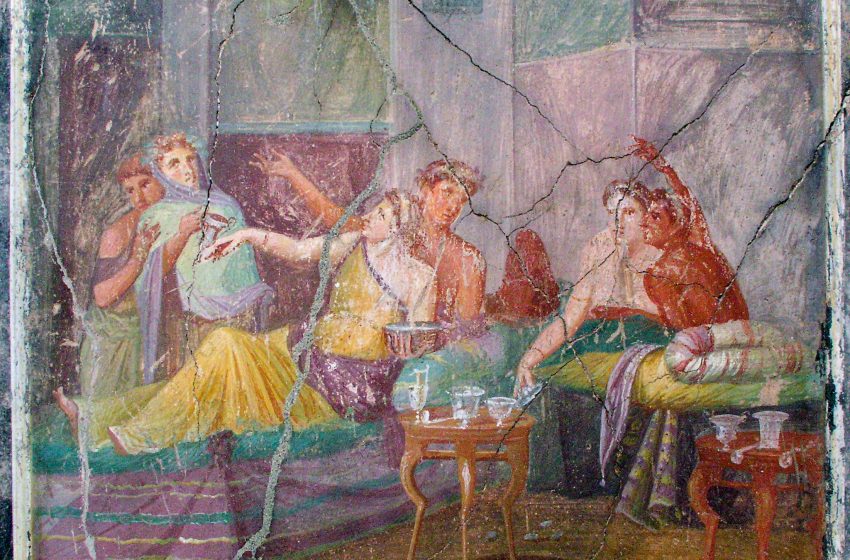
Eros and Food: The Aphrodite Menu
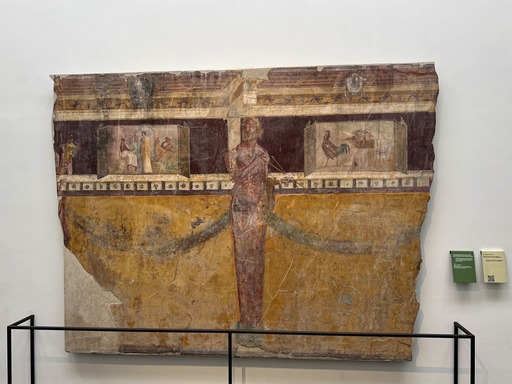
Certainly, excesses and eccentricities were not lacking, and in this perspective, the association between food and sexuality was a natural consequence.
Chef Giovanni Elefante and scholar Francesco Di Martino have reconstructed some recipes, giving rise to a special menu: “Eros and Food, Aphrodite’s Menu,” making adjustments to ensure the dishes offered would be appetizing even in our days. Indeed, the Romans were avid consumers of spices, which were necessary at the time to compensate for the lack of refrigeration. The aromas, along with salt, served as natural preservatives, but in many cases, they were also meant to mask the unpleasant odor resulting from the inevitable deterioration of raw materials.
Today, such a massive use of spices would not make sense.
Spices were also attributed with other properties; they were considered aphrodisiacs (from Aphrodite, the Greek goddess of love, corresponding to Venus in Roman mythology).
Thus, black pepper, cinnamon, saffron, cloves, nutmeg, vanilla, thyme, coriander, mustard, as well as pine nuts and arugula, acquired a certain sacredness and a seductive allure.
Here are the dishes:
Lampascioni al Falerno del Massico with walnut kernels and purslane sprouts.
Lampascioni, slightly bitter pinkish onions originating from Puglia and Calabria, are marinated for 48 hours in Falerno, one of the most famous wines of the Roman Empire, praised by Catullus, Cicero, and Petronius in the Satyricon. The grapes were trodden by slaves to the rhythm of music. The must, aged for years, was then flavored with spices, honey, and seawater!
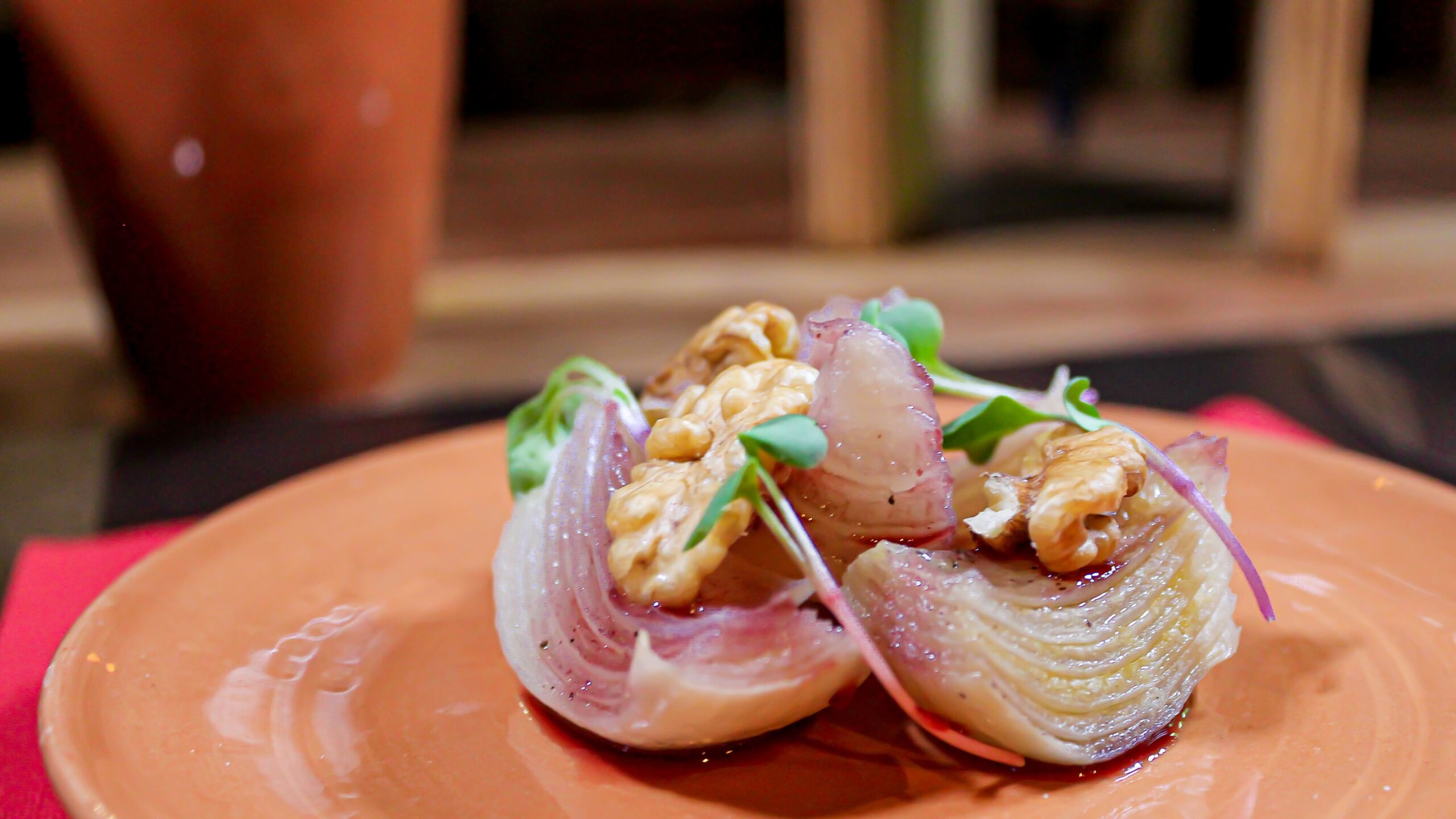
Seared tuna flavored with thyme, pepper, mustard, and black sesame with lettuce and ginger sauce.
The fish steak is dipped in mustard, wrapped in black sesame, and seared for one minute on each side. The fillets are placed on a bed of raw lettuce, another plant sacred to the God of Fertility, chopped and flavored with ginger, and seasoned with oil and salt.
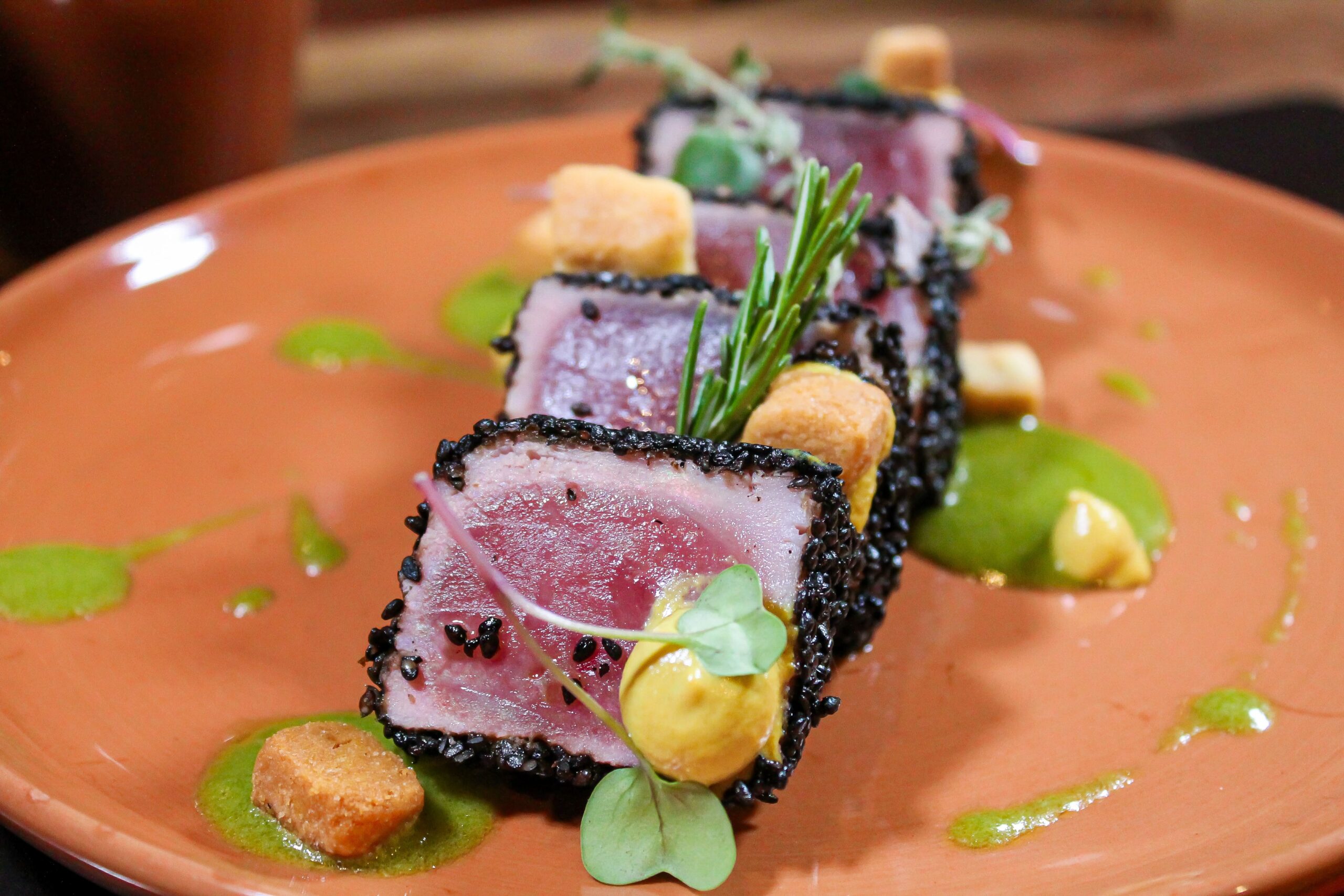
Cold cereal soup with saffron chickpeas, escarole, fried squid with cinnamon, spice sprouts, and garum crostini.
Garum was a sauce used both on meat and fish, derived from the sun maceration, under salt, of small fish like anchovies and sardines, entrails or waste parts of other fish, sometimes oysters, sea urchins, and mollusks.
Some doubt about the healthiness of garum is legitimate.
Today, fresh tuna, anchovies, and sardines fillets and entrails are used in absolute hygiene.
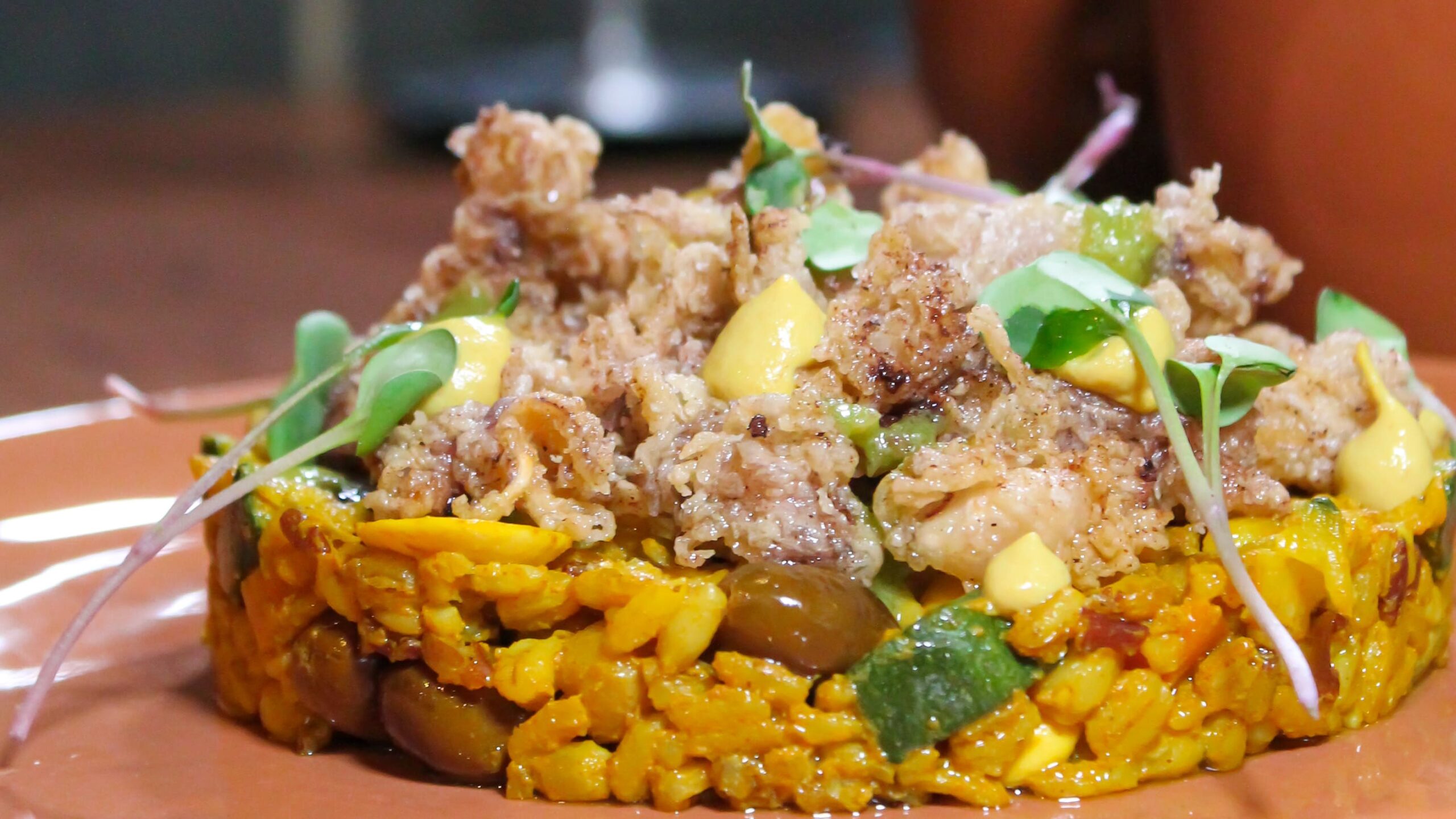
Marinated sea bass with cloves, nutmeg, coriander, wild rocket, and toasted pine nuts, a salad, they say, very much appreciated by Antony and Cleopatra during their encounters.
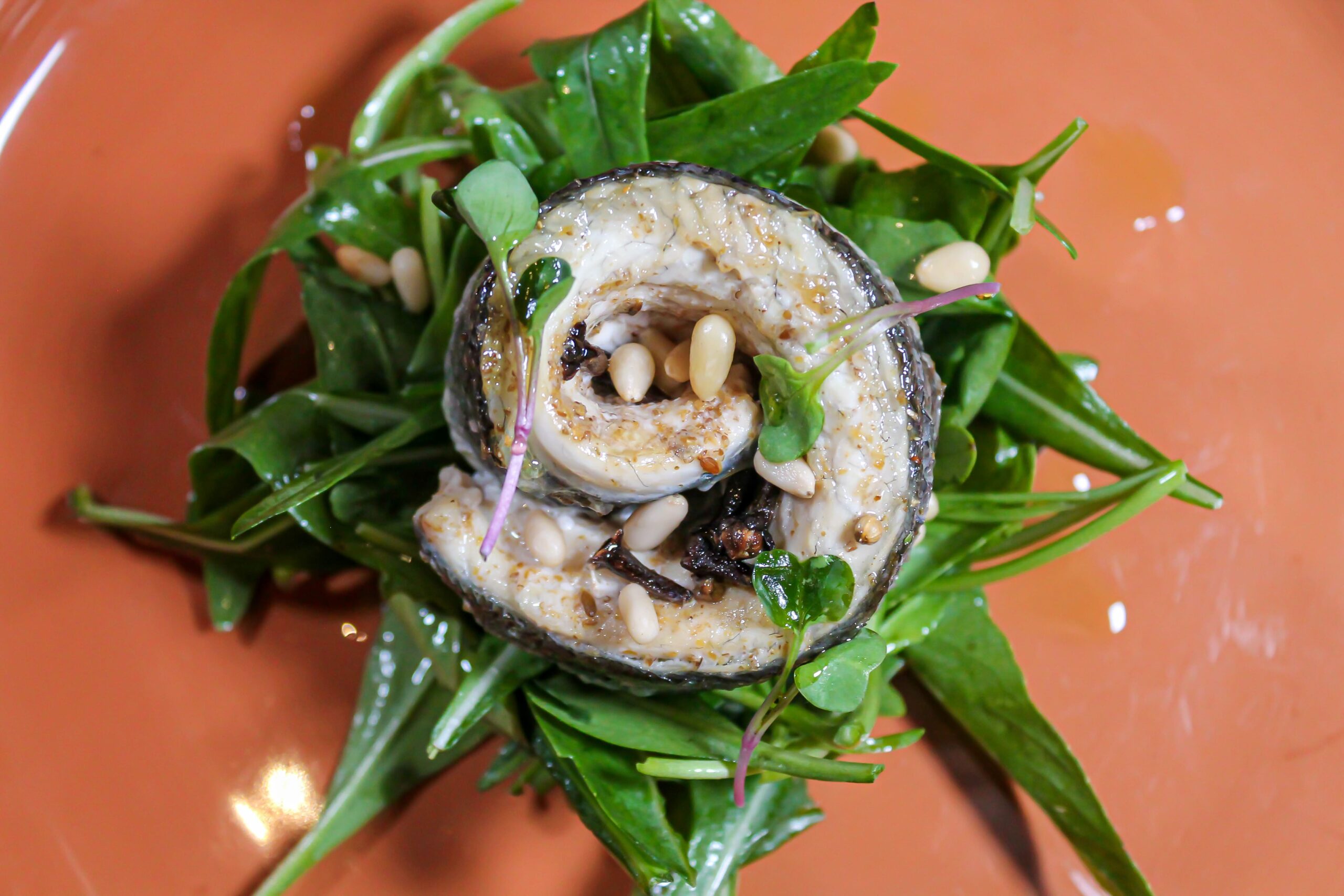
And finally, a dessert: whipped sheep ricotta with honey and carob (considered a unit of measure for the Romans), garnished with raspberries, blackberries, walnuts, and a sprig of mint.
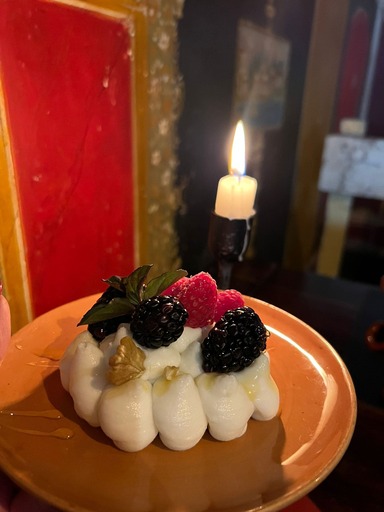
Heartfelt thanks to everyone. Sandra
Images courtesy of:
Pompeii – Archaeological Park
For dish photos: Francesco di Martino
Photo credits:
Francesco Di Martino
Pompeii Archaeological Park

Si occupa di cucina e di tradizioni, con un pensiero sempre sensibile verso le tematiche della sostenibilità sia ambientale che economica.
Leggi in:
![]() Italiano
Italiano









